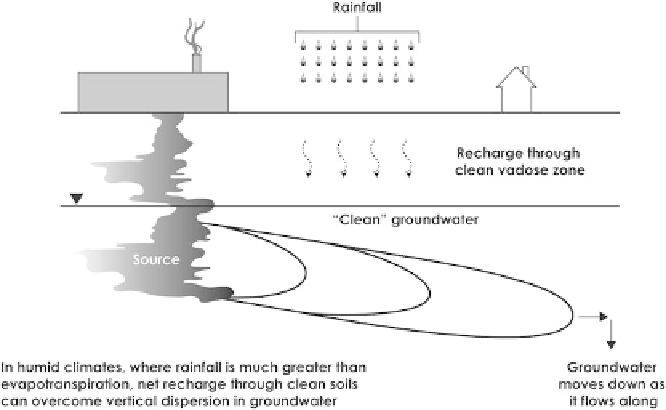Environmental Engineering Reference
In-Depth Information
Fig. 10.5
Fresh water lens as a barrier to volatilization from groundwater (schematic)
buildings from subsurface vapor intrusion, as shown in Fig.
10.5
. This condition
may not develop if water table fluctuations are large, which would result in vertical
mixing of VOCs across the upper water-saturated zone.
In some cases, geologic layers (soil or rock) can impose sufficient resistance to
vapor transport to make the vapor intrusion pathway insignificant, providing the
geologic features are laterally extensive over distances that are large compared to
the size of the building or contaminant distribution. Characterization of the soil
and extent to which specific soil layers may act as a barrier to vapor transport may
require investigative methods such as pneumatic or geophysical testing, which are
different from the sampling and analysis techniques commonly used to assess the
vapor intrusion pathway. Nevertheless, the physical data can in some cases provide
a definitive line of evidence, depending on the site conditions.
10.2.3 Receptor
For vapor intrusion studies, the receptor is usually the occupant(s) of a building.
Receptors are generally either residents or workers, with exposure frequency and
duration, and possibly inhalation rate being the primary differences in the exposure
scenarios. Resident or worker exposures may be compared to risk-based targets or
to indoor air quality standards specified by the regulatory agency with jurisdiction
in the locale in which the assessment is conducted. The applicable indoor air qual-
ity standard should be defined as early as possible in the vapor intrusion pathway
assessment process.
In some circumstances, the building itself could be considered a “receptor”.
Several aspects of the building design, build quality and ventilation characteristics

Search WWH ::

Custom Search